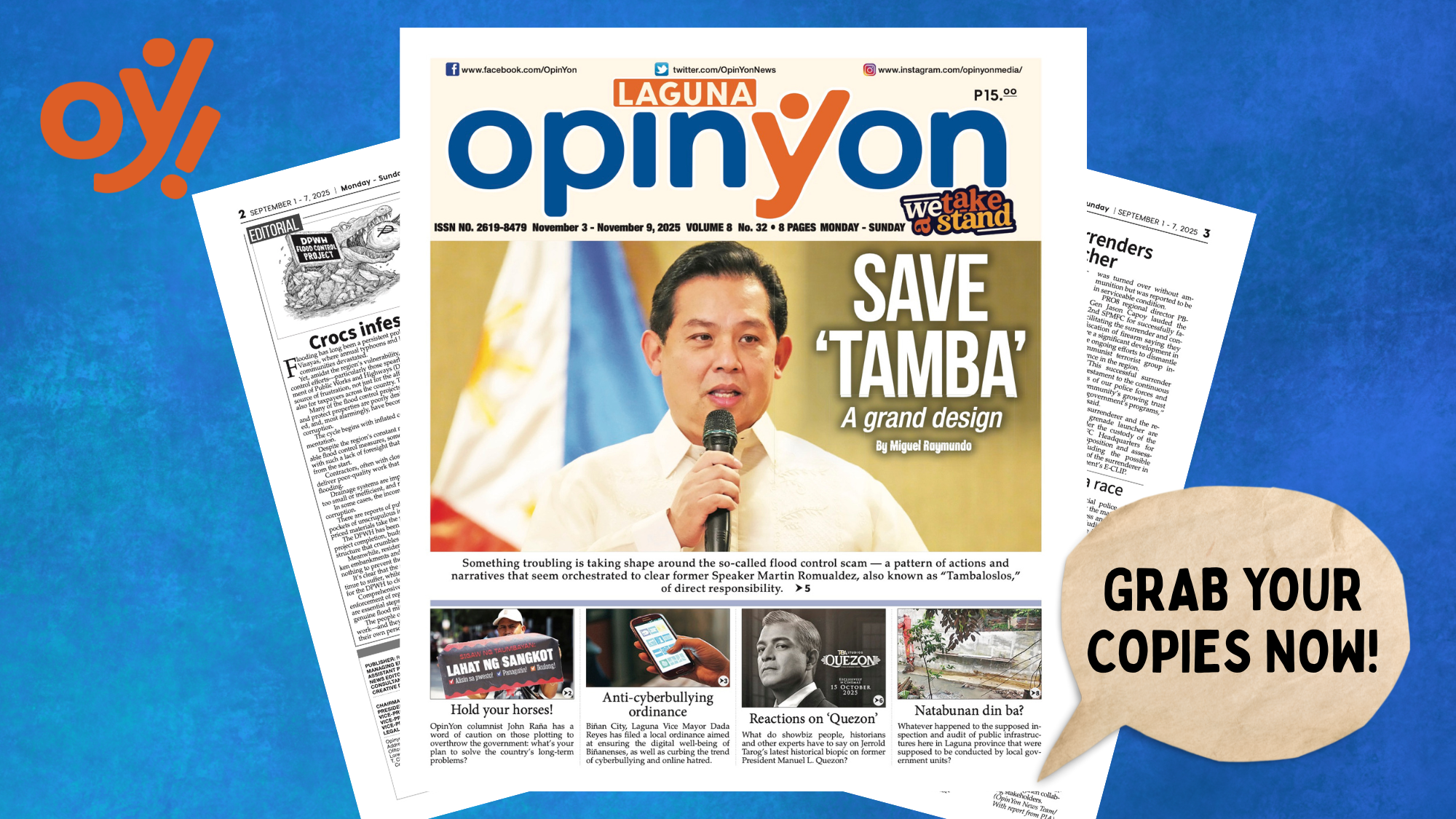Something troubling is taking shape around the so-called flood control scam — a pattern of actions and narratives that seem orchestrated to clear former Speaker Martin Romualdez, also known as “Tambaloslos,” of direct responsibility.
Something troubling is taking shape around the so-called flood control scam — a pattern of actions and narratives that seem orchestrated to clear former Speaker Martin Romualdez (also known as “Tambaloslos,” a derogatory Bisaya term which generally means “useless”) of direct responsibility. While investigations should seek truth and justice, what we are witnessing looks more like a coordinated effort to manage political fallout, protect key figures, and redirect public anger elsewhere.
The scapegoat strategy
The alleged “grand design” rests on several intertwined strategies. First, blame is being heaped almost exclusively on resigned Congressman Zaldy Co, who chaired the House Committee on Appropriations when the questionable budget insertions were made. By portraying Co as the lone mastermind behind the gargantuan “insertions” in the 2025 budget, others conveniently distance themselves from the scandal.
Yet the fact that Co has not been allowed to return and defend himself in full view of the public raises suspicions. Scapegoats are useful only when they remain silent.
Undermining the whistleblower
Second, the credibility of the lone whistleblower, Marine Sergeant Orly Guteza, is being systematically dismantled. Guteza had earlier testified that both Romualdez and Co received kickbacks from contractors tied to flood control projects. His original account was replete with specific details that only an insider could have known.
Then, almost overnight, stories began circulating online that Guteza had recanted, claiming he was coerced into signing his affidavit. No official record of such recantation exists, and no credible media outlet has verified it. Yet the rumor spread quickly, amplified by partisan social media accounts — a classic tactic to confuse the public and blur the line between fact and fabrication.
Marines pride themselves as among the most honorable of the uniformed services. It is therefore unlikely that Guteza’s fellow Marines would support or condone a false recantation.
A committee turned shield
Then came Senator Ping Lacson, chair of the Senate Blue Ribbon Committee, who openly questioned Guteza’s credibility and labeled the affidavit “fake.” While senators have every right to scrutinize evidence, the effect of Lacson’s statements was to publicly discredit the only witness directly linking Romualdez to the scheme.
In doing so, the investigation appears less like a pursuit of truth and more like a carefully managed demolition job on the witness himself.
Shifting narratives from the Ombudsman
Even the Ombudsman, Jesus Crispin Remulla, has contributed to this shifting narrative. At first, he suggested that Romualdez might qualify as a state witness — implying knowledge of wrongdoing by others. Later, his tone changed, saying the former Speaker might instead be liable only for “negligence,” not as an active perpetrator.
Such rhetorical pivots send powerful signals to prosecutors, the media, and the public: the country’s political hierarchy is to be protected at all costs.
Not only the Office of the Ombudsman, but also the courts, have joined the cabal of under-miners against Guteza. The Regional Trial Court Branch 18 of Manila has declared the original Guteza affidavit submitted to the Blue Ribbon Committee as “fake,” the reason being it had spurious notarization by a lawyer who works for the Bureau of Fire Protection, a government office under the DILG. The RTC judge who penned the ruling is Carolina Icasiano-Sison.
This, despite the fact that Orly Guteza affirmed the authenticity of his affidavit personally at the Senate committee hearing.
Diversion and deflection
Meanwhile, attention is being redirected toward the previous administration and select senators, diluting focus on those who held the purse strings when the 2025 budget was approved. The “insertions” — massive allocations for flood control projects — were what enabled the alleged kickback system in the first place. Yet the deeper systemic issue is quietly buried beneath the spectacle of political theater.
Taken together, these developments form a disturbing mosaic: the witness neutralized, the scapegoat isolated, the investigators turned into skeptics, and the prosecutors softened. The public is then left in a fog of conflicting accounts and fading outrage — a familiar pattern in the Philippines whenever accountability reaches too close to the powerful.
Selective justice
If there truly is no wrongdoing, then those accused should welcome full transparency — independent forensic audits, public release of records, and open testimony by all witnesses, including Zaldy Co and Orly Guteza, under protection. But the opposite appears to be happening: silence, diversion, and the slow erosion of public confidence in the process.
The greater tragedy is not just whether one politician escapes justice, but that the machinery of accountability — from Congress to the Ombudsman to the media — remains vulnerable to political manipulation. Every time that happens, the message to the public is clear: in our system, truth is negotiable, and justice is still for sale.
Until that changes, every scandal will end the same way — with the powerless punished, the powerful protected, and the nation once again left in the dark.
